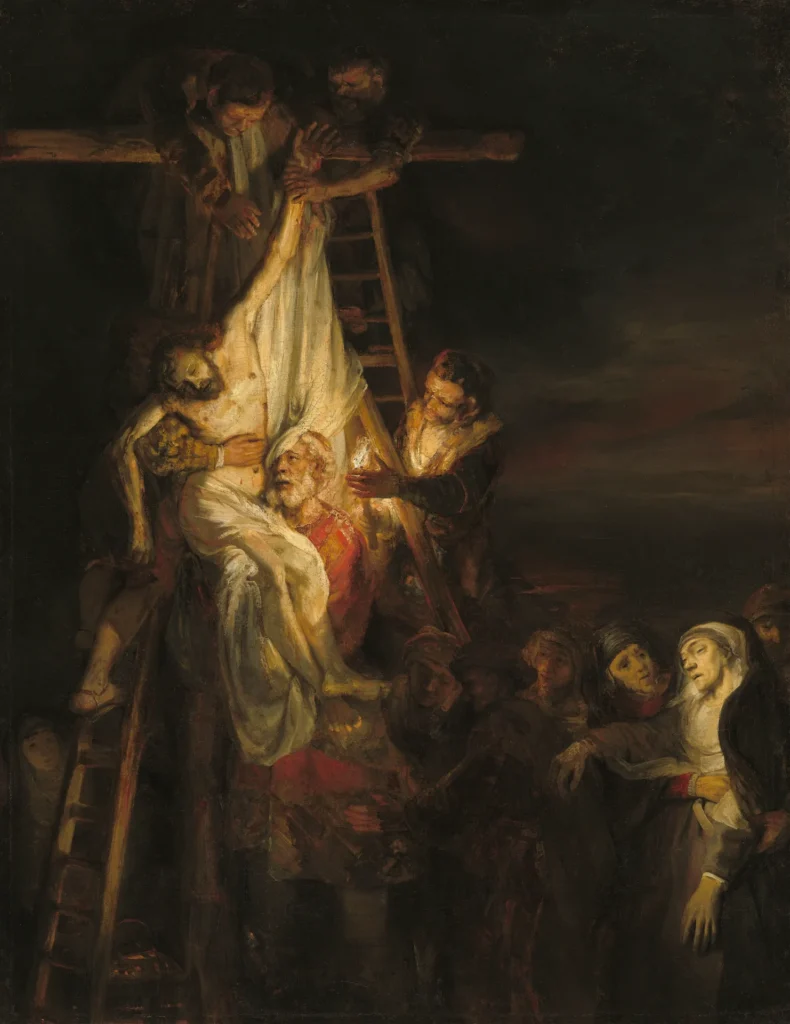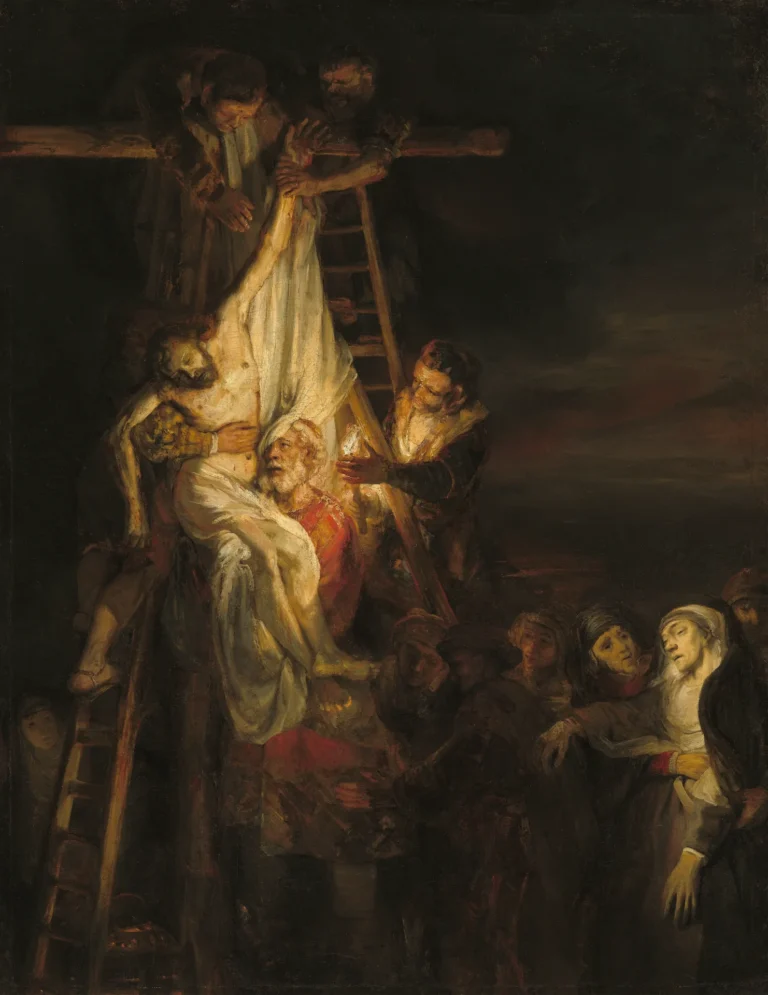The Descent from the Cross
The 'Descent from the Cross' by Rembrandt is a powerful Baroque painting, capturing the dramatic moment of Christ's body being lowered from the cross. The artist masterfully employs light and shadow to highlight the figure of Christ amidst a somber group of mourners, creating a hauntingly realistic portrayal of grief. Unlike traditional representations, Rembrandt's depiction stands out for its raw emotion and attention to detail, emphasizing the weight and sorrow of the moment.
Year 1634
About the Artwork
Created in 1634, Rembrandt's 'Descent from the Cross' draws on the biblical narrative of Christ's crucifixion. Undoubtedly influenced by Peter Paul Rubens, Rembrandt diverged from the idealized beauty of classic portrayals by opting for a more visceral depiction of death. The arrangement of figures around Christ conveys deep sorrow and melancholy, while the masterful lighting cascades dramatically across the scene, directing the viewer's eye to the central figure. This work stands as a testament to Rembrandt's innovative approach and emotional engagement with religious subjects.
Did You Know
Rembrandt’s work was influenced by the earlier depictions of the scene by Peter Paul Rubens, who approached the subject with idealization, whereas Rembrandt opted for a raw, realistic portrayal.
The painting exemplifies Rembrandt’s mastery of chiaroscuro, where stark contrasts between light and dark are used to enhance emotional depth and create dramatic focus.
Today, Rembrandt’s ‘Descent from the Cross’ can be found in the Hermitage Museum in St. Petersburg, a significant institution dedicated to preserving and showcasing historical art.










